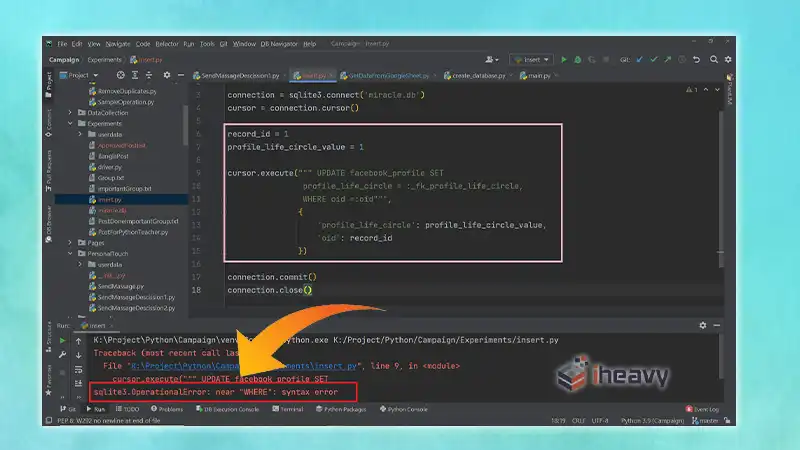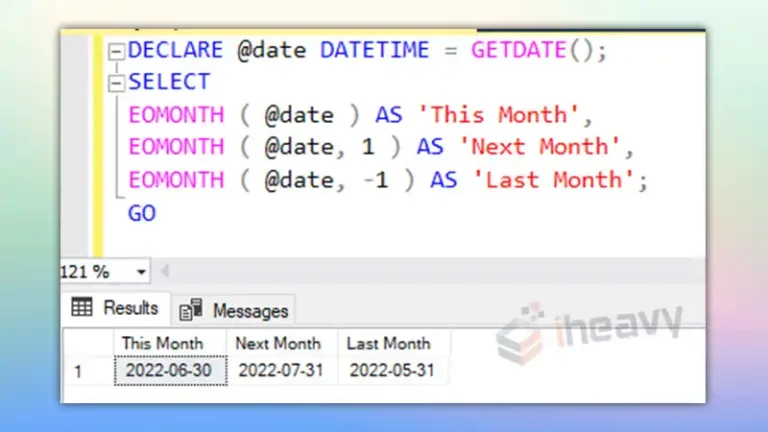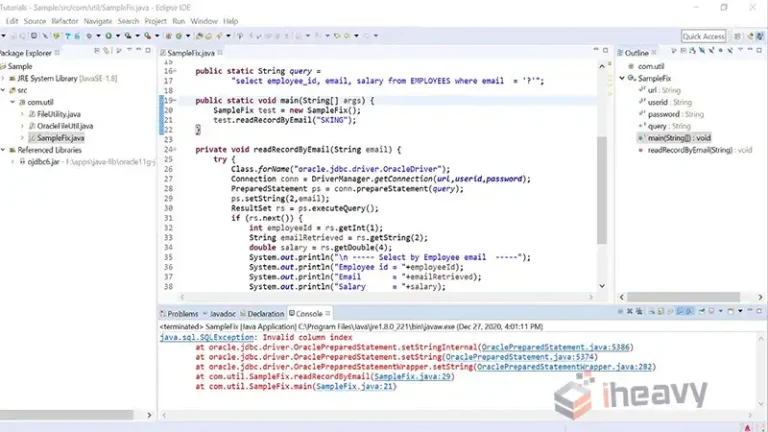sqlite3.OperationalError | Database is Locked | Now What?
When you encounter the sqlite3.OperationalError: database is locked error, it means SQLite is unable to access the database file because it is already being accessed by another operation.
This error typically occurs in scenarios where multiple database connections or threads are trying to write to the database simultaneously. SQLite uses file-level locking, which restricts concurrent write operations.

What Is sqlite3.OperationalError: Database Is Locked?
The “database is locked” error in SQLite typically occurs when an attempt is made to write to the database while another process or thread is currently accessing it. SQLite handles locking at the database file level.
When a write operation begins, SQLite locks the entire database file to ensure data integrity. If another connection tries to access the database while this lock is active, it encounters the “database is locked” error. Common causes include:
Concurrent Write Operations: SQLite allows multiple readers but only one writer. If two processes or threads attempt to write to the database simultaneously, one of them will receive the “database is locked” error.
Long-Running Transactions: If a transaction takes a long time to complete, it can lock the database, preventing other operations from accessing it. This is common in operations that involve heavy data manipulation or complex queries.
Unreleased Locks: Sometimes, a lock may not be released properly due to an application crash or an improper handling of database connections, causing subsequent operations to fail.
Multiple Database Connections: Applications that open multiple connections to the same SQLite database file without proper management can experience locking issues. Each connection can potentially block others, leading to the error.
How Do You Fix SQLite3 Database Is Locked?
Here are 4 methods that you can try to fix the “database is locked” error.
1. Retry Mechanism
Implement a retry mechanism that catches the “database is locked” error and retries the operation after a short delay. This approach can resolve transient locking issues without major changes to the application logic.
import sqlite3
import time
def execute_with_retry(query, params, retries=5, delay=0.1):
for attempt in range(retries):
try:
conn = sqlite3.connect('example.db')
cursor = conn.cursor()
cursor.execute(query, params)
conn.commit()
cursor.close()
conn.close()
return
except sqlite3.OperationalError as e:
if "database is locked" in str(e):
time.sleep(delay)
else:
raise
raise sqlite3.OperationalError("Database is locked after several retries")
# Usage
execute_with_retry("INSERT INTO users (name) VALUES (?)", ("Alice",))2. Optimize Transactions
Keep transactions as short as possible. This minimizes the time the database is locked and reduces the likelihood of conflicts.
def update_user_name(user_id, new_name):
conn = sqlite3.connect('example.db')
cursor = conn.cursor()
try:
cursor.execute("BEGIN TRANSACTION")
cursor.execute("UPDATE users SET name = ? WHERE id = ?", (new_name, user_id))
conn.commit()
except sqlite3.OperationalError as e:
conn.rollback()
raise
finally:
cursor.close()
conn.close()3. Connection Pooling
Use a connection pooling library to manage database connections efficiently. This ensures that connections are reused and properly closed, reducing the chance of locks.
from sqlite3 import dbapi2 as sqlite3
from sqlalchemy.pool import QueuePool
def get_conn():
pool = QueuePool(lambda: sqlite3.connect('example.db'), max_overflow=10, pool_size=5)
return pool.connect()
# Usage
conn = get_conn()
cursor = conn.cursor()
cursor.execute("SELECT * FROM users")4. Use WAL Mode
Enable Write-Ahead Logging (WAL) mode, which allows for better concurrency by enabling multiple connections to read and write simultaneously. This can significantly reduce locking issues.
conn = sqlite3.connect('example.db')
conn.execute('PRAGMA journal_mode=WAL;')
conn.close()Frequently Asked Questions
Does SQLite lock the database?
SQLite handles locking internally based on the SQL commands you execute, particularly when you start transactions explicitly.
Can I disable locking in SQLite?
No, SQLite’s locking mechanism ensures data integrity. Disabling it would lead to corruption.
What is the default locking mode in SQLite?
The default locking mode in SQLite is NORMAL, which locks the database during write operations.
Conclusion
Encountering sqlite3.OperationalError: database is locked can be frustrating, but understanding the causes and implementing the right strategies can mitigate this issue. Whether through retry logic, transaction optimization, or using WAL mode, you can ensure smoother database operations. If you have any questions or need further assistance, feel free to ask. Thank you for reading!






